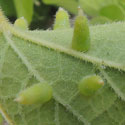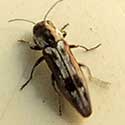Net-leaf Hackberry &
Gall Psyllids
Celtis laevigata &
Pachypsylla
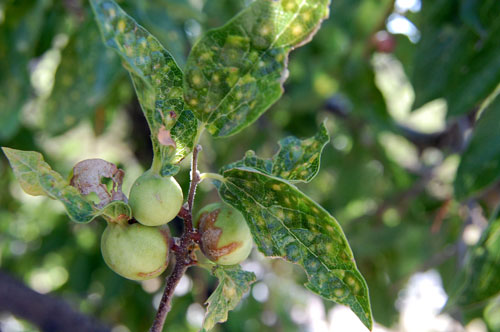
Leaf petioles swell in response to feeding by small psyllid insects. The swelling produces a cavity where the bugs take shelter.
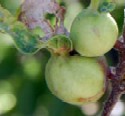
Net-leaf Hackberry trees almost always harbor a population of gall psyllids (Pachypsylla sp., an aphid-like bug) that reside within blisters on the leaf petioles and on the leaf blades. These swollen structures might appear at first to be a fruit of some kind. The bugs produce an irritating substance similar to a plant hormone that causes the petiole to swell providing both room and board for the uninvited guests. The structures become very hard and durable and remain on the tree through the winter providing the psylids a very secure home; the insect activity also prevents the leaf from falling from the tree - ungalled leaves are shed normally. Observed in Rackensack Canyon, Maricopa County, Arizona, 03 Aug. 2008. On 19 Dec. 2008 I observed a Ladder-backed Woodpecker (Picoides scalaris) breaking open a gall after numerous hard pecks and consuming the psyllid contents. Checking the tree I found many galls with holes and chips indicating successfull and unsuccessful predation attempts. The flexibility of the leaf petiole makes the breaking open task difficult; the bird must secure the leaf with one of its toes to get enough leverage.
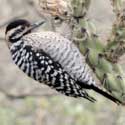
Sponsored Link:
Hackberry Psyllid &
Ladder-backed Woodpecker
Pachypsylla &
Picoides scalaris
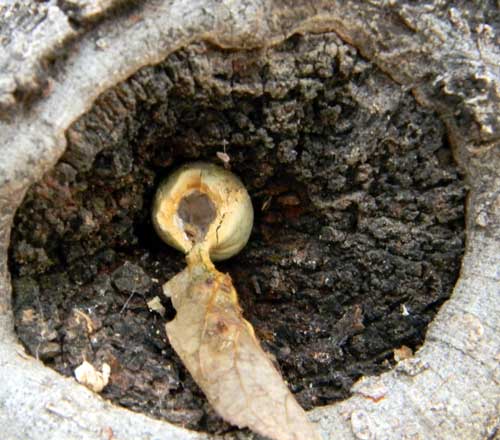
Many psyllid galls were found wedged into crevices and broken open in the Wickenburg Mts., Yavapai Co., Arizona, 18 Dec. 2010.
Along King Solomon Wash in the Wickenburg Mountains of Yavapai Co., I found many galls that had been wedged into crevices in hackberry tree trunks and subsequently broken open. Like a vice the birds have learned to use these holding points as tools in order to feed on the bugs inside the hard-to-crack galls. In previous years this behavior was not exhibited at this location; maybe woodpeckers can learn new foraging techniques. The ground beneath ideal wedging spots was littered with scores of emptied galls.
Sponsored Link:
In the Bradshaw Mountains of Yavapai Co., I found a tree with finger-galls which I have not yet seen elsewhere. The galls are caused by chemicals released by minute mites feeding within. The immature stages of a small metallic beetle tunnel into dead branches or twigs.
